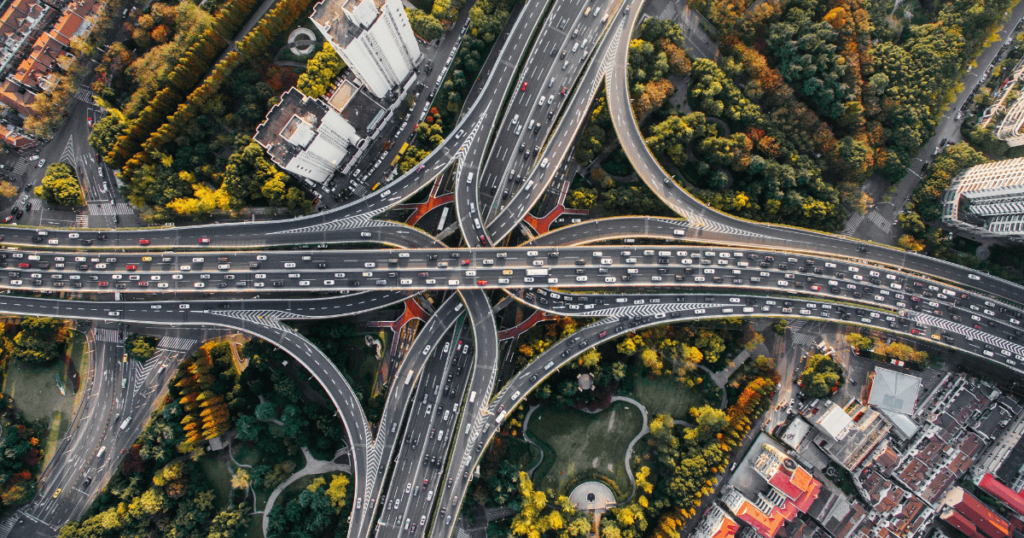Contents
- What Are Site Metrics?
- Why Tracking Site Metrics is Important
- 14 Essential Site Metrics for Enhancing Your Directory Site Performance
- Bonus: Essential Tools to Track Your Site Metrics
- Wrapping up the Essential Site Metrics for Your Directory Website
Maximizing Achievement: Essential Site Metrics for Enhancing Performance on Your WordPress Directory Website or Marketplace
Your WordPress directory website or marketplace is a hub of connection, but how do you know it’s firing on all cylinders? Just like any business, data is king. By tracking essential website metrics, you gain valuable insights to optimize performance and keep users engaged.
This blog post will equip you with the key metrics to focus on, helping you transform your WordPress directory into a booming online destination. Finally, we will walk you through some groundbreaking tools for easily tracking and understanding your website’s data.
So, without further ado, let’s dig deeper.
What Are Site Metrics?

Site metrics are numbers that tell you how your website is doing. Let’s assume, your WordPress directory website is a physical store. Site metrics are like the counters and cameras you use to track how your store is doing. These metrics give you numbers on things like how many people visit and what they look at.
For example, site metrics can tell you how many people visit your directory website (traffic), how long they stay on each page (engagement), and which sections of your website are most popular (content performance).
By tracking these metrics, you can understand what’s working well and what isn’t, which can help you drive more traffic to your online store and improve your bottom line.
Try HelpGent
See your online business grow
Why Tracking Site Metrics is Important
Tracking site metrics is crucial for several reasons. Let’s discuss a few reasons why you should track your website metrics:
- See what’s working and what’s not: Without metrics, you’re flying blind. Tracking them lets you see if your directory website is attracting visitors if they’re finding what they need, and if they’re taking the actions you want them to (like contacting a business listing).
- Make data-driven decisions: Metrics give you hard numbers, not just guesses. This allows you to make informed choices about how to improve your website. Maybe a certain category isn’t getting much traffic, so you can adjust it or add more content.
- Stay ahead of the competition: By tracking metrics, you can see what’s popular with visitors and what your competitors are doing well. This helps you stay relevant and keep your directory website at the top of its game.
14 Essential Site Metrics for Enhancing Your Directory Site Performance
In this segment, we will discuss 14 crucial site metrics that you should track to enhance your site performance. We have divided these 14 metrics into 4 categories. Let’s take a look at the categories:
- Traffic Metrics
- User Engagement Metrics
- Conversion Metrics
- User Experience Metrics
Now let’s discuss each of the above-mentioned site metrics in detail!
01. Traffic metrics

A traffic metric is a measurement used to evaluate the volume and behavior of visitors on your website. It provides insights into how users find and interact with your site, as well as the effectiveness of various marketing strategies in driving traffic.
We will discuss 5 traffic metrics:
- Unique visitors
- Page views
- Sessions
- Bounce rate
- Referrals
a) Unique visitors
Unique visitors tell you the number of individual people who visit your directory website within a specific timeframe. Think of it like a headcount at your store. It doesn’t matter if someone visits your site once or ten times in a day, they’ll only be counted as one unique visitor.
This metric is important because it helps you understand the reach of your website. A high number of unique visitors indicates that your directory is attracting a good audience size. It can also help track the effectiveness of marketing campaigns aimed at driving new visitors to your site.
b) Page views
Page views are another crucial traffic metric for assessing the performance and popularity of your directory website. A page view is counted each time a visitor loads or reloads a page on your site, regardless of whether it’s the same visitor or multiple visits from the same user. Essentially, page views indicate how often users are accessing content on your website.
Tracking page views provides valuable insights into user behavior and content consumption patterns. A high number of page views suggests that visitors are actively exploring multiple pages within your directory site, indicating strong engagement and interest in the content you offer.
Conversely, a low number of page views may indicate that users are not finding your content compelling or that your site’s navigation needs improvement.
c) Sessions
While unique visitors tell you the individual people visiting your site and page views track how many times any page is loaded, sessions provide a more comprehensive picture. A session essentially groups all the activity from a single user during their visit to your directory website.
Think of it like a customer’s shopping trip. A session starts when a visitor lands on your homepage and ends when they leave the site (by closing the browser, being inactive for a set time, or taking a specific action like completing a purchase). All the page views, clicks, and interactions within that timeframe become part of a single session.
d) Bounce rate
Bounce rate measures the percentage of visitors who land on a single page of your directory website and then leave without visiting any other pages. Imagine someone walks into your store, glances around for a second, and then walks right back out. That’s a bounce in the website world.
If the bounce rate is high, it means lots of people are clicking away from your site after seeing just one page. This could happen if they don’t find what they’re looking for or if the page takes too long to load. But if the bounce rate is low, it means visitors are hanging around and checking out more of your website, which is a good sign that they’re interested in what you have to offer.
e) Referrals
Referrals in the context of website metrics refer to the sources from which visitors arrive at your website. These sources could include other websites, search engines, social media platforms, or online advertisements.
By tracking referral sources, website owners can identify which external channels are driving traffic to their site.
For example, if a significant portion of visitors are coming from a particular website or social media platform, it indicates that these channels are effective at directing users to your site. This information can help inform marketing strategies and partnerships, allowing you to focus resources on channels that yield the highest return on investment.
02. User engagement metrics

User engagement refers to how actively users interact with your website. It’s measured by factors like time spent on the platform, frequency of visits, and depth of interaction.
Let’s talk about the user engagement metrics:
- Average Time on Page
- Number of Pages Viewed Per Session
- Click-through Rate (CTR)
a) Average time on page
Average time on page is like measuring how long people spend browsing a particular section of your directory store. It tracks the average amount of time visitors stay on any one page of your website before moving on to another.
A higher average time on the page for key directory sections like listing pages can indicate a few good things:
- Visitors are finding the content on those pages engaging and informative.
- They might be actively considering the businesses or information listed.
However, keep in mind that a very high average time on page on your homepage could suggest visitors are struggling to find what they need and taking a long time to navigate.
b) Number of pages viewed per session
Number of pages viewed per session is like tracking how many different pages a customer visits in your directory store during one shopping trip. It measures the average number of pages a visitor looks at on your website within a single session (their entire visit).
Imagine someone walks into your store, browses the clothing section (one page), then checks out the electronics (another page), and maybe even peeks at the home goods section (a third page) before leaving. That would be three pages viewed in one session.
c) Click-through rate (CTR)
Click-through rate is a metric commonly used in online advertising and email marketing to measure the percentage of users who click on a specific link or call-to-action out of the total number of users who view the content. It provides insights into the effectiveness of a particular ad, email campaign, or webpage in generating interest and driving user engagement.
A higher CTR typically indicates that the content or advertisement is compelling and relevant to the audience, encouraging more users to click through and take action. Conversely, a lower CTR may suggest that the content or ad is less engaging or targeted, requiring optimization to improve performance.
03. Conversion metrics

A conversion metric refers to a measurement used to track and analyze the rate at which visitors to your website complete a desired action or goal. This action could include making a purchase, signing up for a newsletter, filling out a contact form, etc.
We will discuss 3 conversion metrics:
- Conversion Rate
- Lead Generation Rate
- Customer Acquisition Cost
a) Conversion rate
Conversion rate in your directory website world is like tracking how many people who walk into your store actually end up buying something. It measures the percentage of visitors who take a desired action on your directory, compared to the total number of visitors.
Imagine you have 100 people visit your directory listing for a local plumber. If 5 of those visitors end up contacting the plumber for a quote, your conversion rate for that listing would be 5%.
b) Lead generation rate
Lead generation rate for your directory website is like tracking how many people who walk into your store show interest and provide their contact information for future promotions or sales.
It measures the percentage of visitors who take an action specifically designed to capture their interest and potentially convert them into customers later.
c) Customer acquisition cost
Customer Acquisition Cost (CAC) for your directory website dives a bit deeper than just counting visitors. It’s like calculating the average amount of money you spend to convince a single visitor to take a desired action on your directory, essentially becoming a customer.
Let’s assume, you spend money on advertising to drive traffic to your directory website. CAC considers all your marketing and sales expenses and then divides that total cost by the number of visitors who convert into paying customers.
04. User experience metrics

User experience (UX) metrics are measurements used to evaluate the quality of interaction between users and your website.
Here are the user experience metrics that we are going to talk about:
- Load Time
- Mobile Responsiveness
- Site Speed
a) Load time
Load time means how long it takes for a webpage to display its content after a user requests it. It’s crucial for user experience, as faster load times lead to higher satisfaction and engagement, while slower load times can frustrate users and increase bounce rates.
Optimizing load time involves reducing page size, minimizing code, and leveraging caching and CDNs to ensure a seamless experience for website visitors.
b) Mobile responsiveness
If your website is mobile responsive, it will automatically adjust its layout and design to any type of screen. This means clear menus, easy-to-read text, and clickable buttons on any device, ensuring a frustration-free experience for all visitors, no matter how they choose to access your directory.
To ensure mobile responsiveness, you can use responsive design techniques, such as flexible grids, media queries, and fluid images. Testing across various mobile devices and browsers is also crucial to identify and address any compatibility issues.
c) Site speed
Site speed is a broader concept that encompasses both load time and other factors affecting how quickly your directory website loads and displays its content to visitors.
It’s a critical factor in user experience, as faster load times lead to higher satisfaction and engagement, while slower load times can frustrate users and increase bounce rates.
Optimizing site speed involves various techniques, such as minimizing code, optimizing images, leveraging caching, and using content delivery networks (CDNs), to ensure a smooth and efficient browsing experience for visitors.
Bonus: Essential Tools to Track Your Site Metrics
Tracking site metrics is essential for optimizing website performance and achieving your business goals. Here are some essential tools to help you track and analyze your site metrics effectively:
I) Google Analytics
Google Analytics is a free web analytics tool provided by Google that offers comprehensive insights into website traffic, user behavior, and conversion metrics. It provides a wide range of reports and features to track key metrics such as traffic sources, audience demographics, behavior flow, and goal conversions.
II) Google Search Console
Google Search Console is another free tool from Google that focuses on optimizing a website’s presence in Google search results. It provides valuable data on search performance, including impressions, clicks, and click-through rates (CTR). It also helps identify technical issues, monitor site health, and optimize content for search engine visibility.
III) Hotjar
Hotjar is a powerful tool for understanding user behavior on your website through heatmaps, session recordings, and surveys. It allows you to visualize how users interact with your site, identify areas of interest or friction, and gather feedback to improve user experience.
IV) SEMrush
SEMrush is an all-in-one digital marketing platform that offers tools for SEO, PPC, content marketing, and competitive analysis. It provides insights into organic and paid search traffic, keyword rankings, backlinks, and more, helping you track and improve your site’s performance across various channels.
V) Ahrefs
Ahrefs is a comprehensive SEO toolset that offers insights into backlinks, keyword rankings, content performance, and competitor analysis. It helps you track your site’s visibility in search engines, identify opportunities for improvement, and stay ahead of the competition.
These tools provide valuable data and insights to help you monitor and optimize your site metrics effectively, ultimately driving better performance and achieving your business objectives.
Wrapping up the Essential Site Metrics for Your Directory Website
Optimizing essential site metrics is paramount for enhancing the performance of your WordPress directory website or marketplace. By focusing on factors such as page speed, mobile responsiveness, user experience, and SEO optimization, you can create a seamless and engaging platform for your visitors and customers.
Regular monitoring and analysis of these metrics, coupled with strategic adjustments, will not only improve user satisfaction but also contribute to higher rankings, increased traffic, and ultimately, greater success for your online venture.




Leave a Reply
You must be logged in to post a comment.